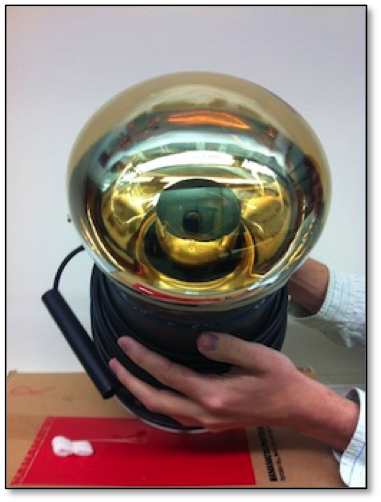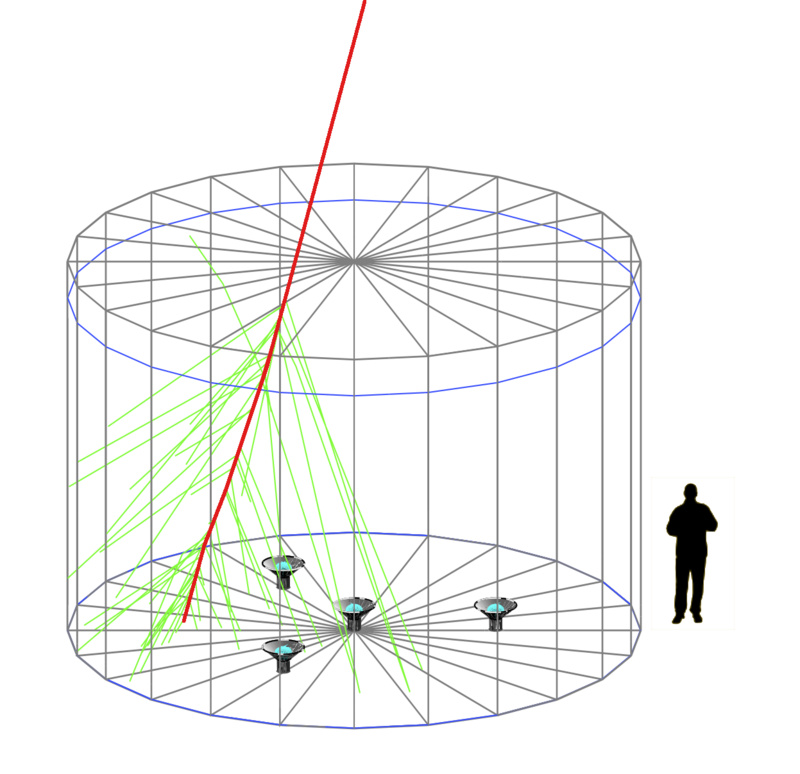Detector


In HAWC, these secondary particles are detected by instrumented water tanks. When the shower particles reach the ground and cross the tanks, they emit Cherenkov light because they are moving faster than the speed of light on water. This light is collected by fast light detectors, so-called photomultiplier tubes (PMTs), which are located at the bottom of the water tanks. By using the light-yield and timing information from the PMTs, the arrival direction of the extensive air shower and therefore the direction of the primary primary particle can be reconstructed, allowing HAWC scientists to produce sky maps of the arrival direction distribution of the particles and identify sources on the sky.

Ground-based instruments like HAWC have to detect gamma-ray sources against the background of charged cosmic rays, which are more than 1,000 times more abundant than gamma rays at TeV energies. Separation of gamma-induced showers from hadron-induced showers is therefore one of the most crucial tasks of data analysis in gamma-ray astronomy. In HAWC, the analysis of the two-dimensional pattern of triggered PMTs and their charge provides a means to separate hadron- and gamma-induced showers. The lateral profile of gamma showers is relatively smooth due to their almost purely electromagnetic nature. Hadron-induced showers have a messy profile with "hot spots'' from penetrating particles far from the shower core. By tagging all events with a large amount of charge far away from the core as hadronic, it is possible to reject more than 99% of the background for events above 10 TeV. The remaining cosmic-ray background is irreducible and needs to be estimated to identify gamma-ray sources.
